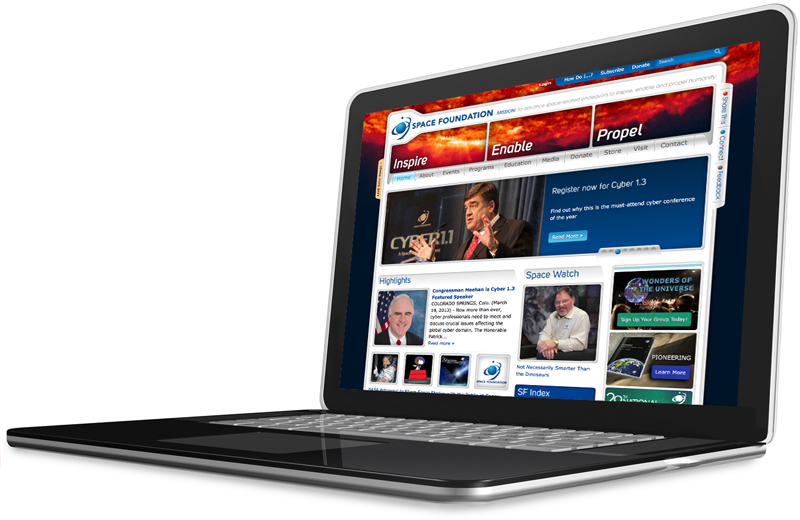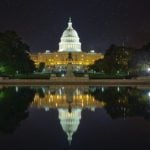Year In Review (archive)
Annual Report: Big Accomplishments in 2012
Written by: developer
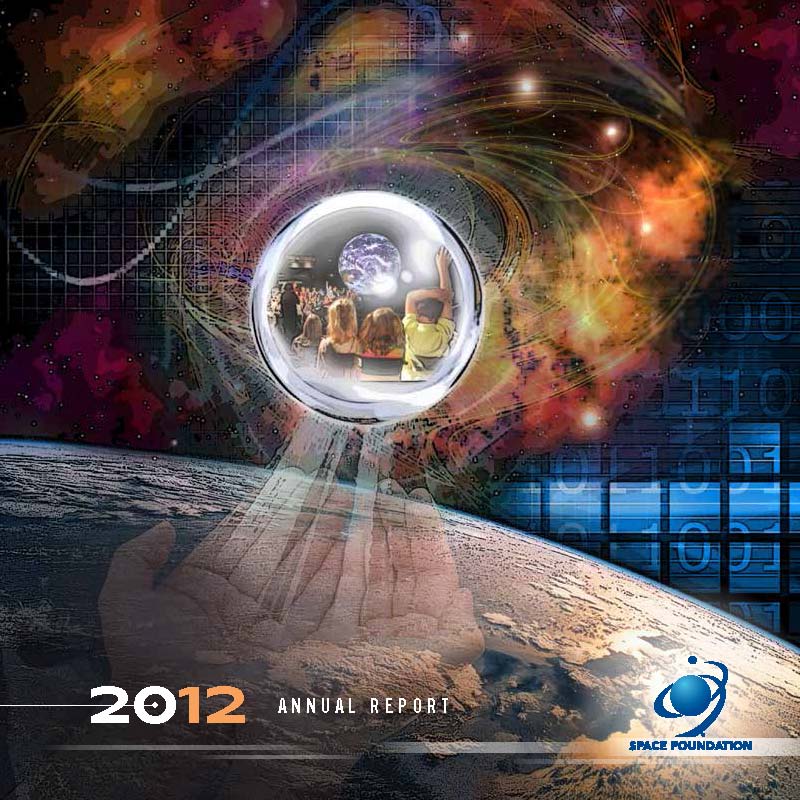 The Space Foundation has just released our digital annual report chronicling our accomplishments in 2012. In this section of Space Watch, we're giving you a quick look at what it contains.
The Space Foundation has just released our digital annual report chronicling our accomplishments in 2012. In this section of Space Watch, we're giving you a quick look at what it contains.
Last year was transformational: we realized a number of long-term goals, became more diverse and global and launched new projects.
Here are the major highlights.
New Space Foundation Website
We began the year by launching our new Space Foundation website - www.spacefoundation.org - that features:
- Information on Space Foundation programs and initiatives.
- More than 2,400 pages of upcoming events, news briefs, press releases, the Space Watch e-newsletter, white papers, news from Space Foundation partners and more.
- Colorful photo galleries and videos.
- Downloadable program overviews and fact sheets.
- Free resources for teachers and students.
- Space Foundation Indexes that provide daily updates on space industry stock market performance.
- Options to share, bookmark, connect to links, access social media sites and provide feedback.
- Stunning and colorful design that includes continually updated images of the sun from Images from NASA's Solar Dynamics Observatory (SDO).
- Clear information on how to find and contact the Space Foundation.
The site, developed entirely in-house by the Space Foundation marketing team, is continually updated with new features and information.
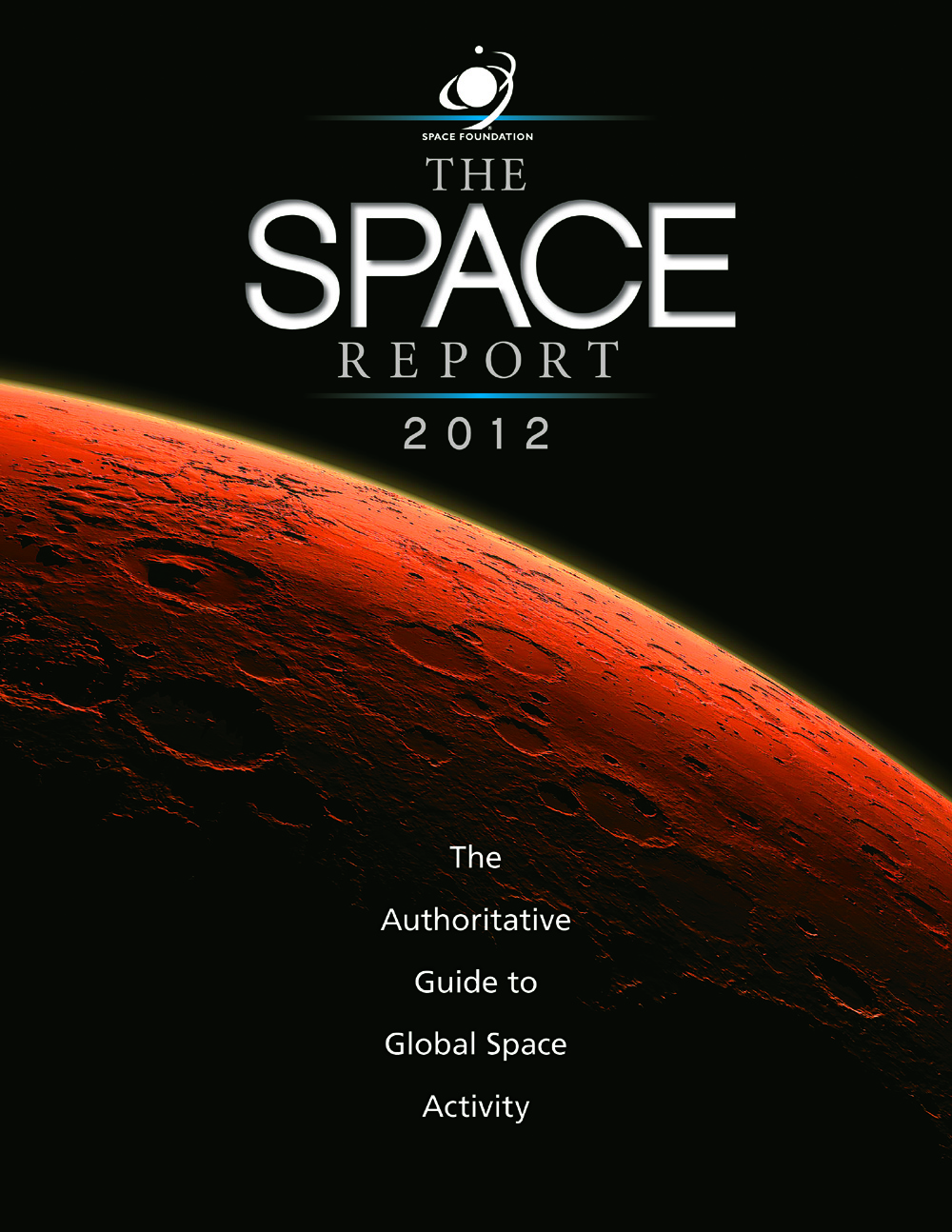 The Space Report 2012
The Space Report 2012
The 2012 edition of Space Foundation's flagship publication, The Space Report: The Authoritative Guide to Global Space Activity, revealed that the global space economy continued to grow. Areas covered in The Space Report include:
- Commercial segments of the global space economy were the primary growth engine.
- Commercial space stocks out-performed the marketplace.
- Overall governmental space spending grew by 6 percent globally, but changes varied significantly by country; India, Russia and Brazil each increased government space spending by more than 20 percent and other nations, including the United States and Japan, saw little change.
- In 2011, there were 84 launches, 14 percent more than 2010; Russia led with 31, China had 19 and the U.S. had 18, marking the first time that Chinese launches exceeded those of the United States.
- At the end of 2011, there were an estimated 994 active satellites in orbit around the Earth.
- Among the top 25 fixed satellite services operators by revenue, only one is based in the U.S.
- The U.S. space workforce declined for the fourth year in a row, dropping 3 percent to the second-lowest employment level recorded during the previous ten years; Europe and Japan saw increases in their space workforces.
- The U.S. military space workforce rose 6 percent; with Air Force space up 8 percent and the Navy down 5 percent.
- Average annual space industry salaries were 15 percent more than the average salary for the ten STEM careers that employ the largest number of people in the U.S.
Learn more here.
28th National Space Symposium
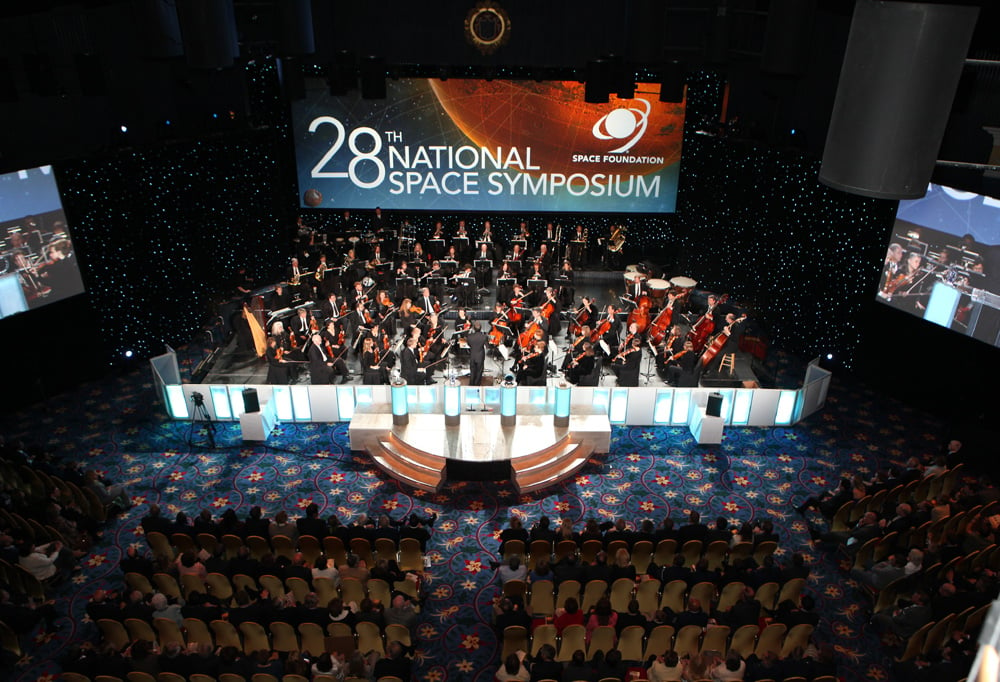 The premier gathering of space professionals in the world, the 28th National Space Symposium, was held April 16-19 at The Broadmoor Hotel in Colorado Springs. Highlights included:
The premier gathering of space professionals in the world, the 28th National Space Symposium, was held April 16-19 at The Broadmoor Hotel in Colorado Springs. Highlights included:
- The largest number of exhibitors ever in the Ball Aerospace Exhibit Center Pavilion.
- More than 9,000 participants.
- Almost 40 nations represented.
- Presentation of prestigious Space Foundation awards.
- An extraordinary slate of speakers and panelists.
- The most diverse group of co-sponsors in our history.
To find out more, read Annual Report: Cyber 1.2, National Space Symposium are Huge Success in this issue of Space Watch. Learn more about the National Space Symposium here.
Space Foundation Visitors Center
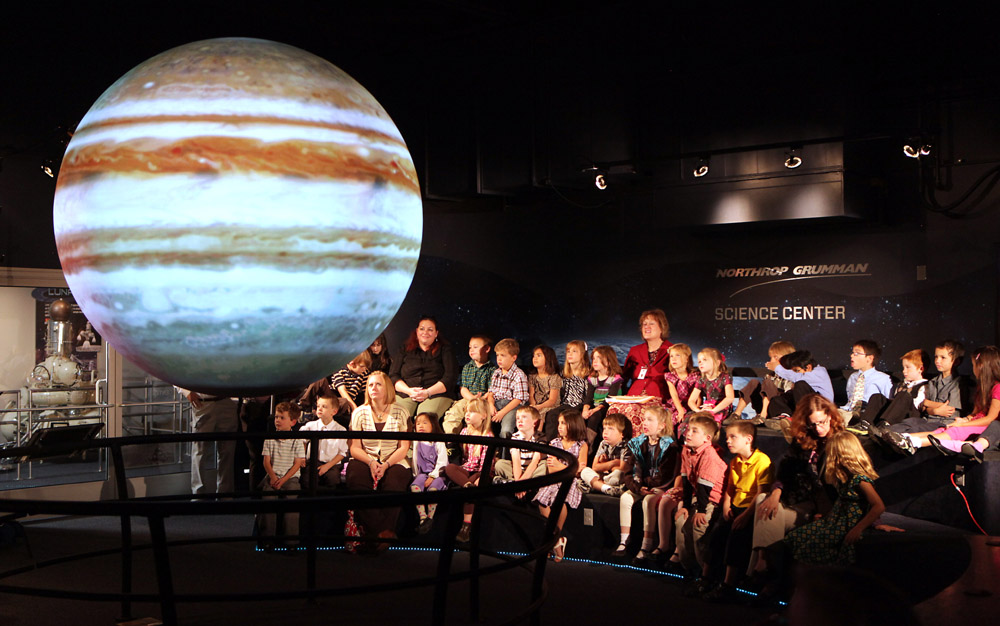 In October, we realized a long-time dream with the opening of our Visitors Center, which comprises the Northrop Grumman Science Center and the El Pomar Space Gallery.
In October, we realized a long-time dream with the opening of our Visitors Center, which comprises the Northrop Grumman Science Center and the El Pomar Space Gallery.
Made possible by a $375,000 donation from Northrop Grumman, the Northrop Grumman Science Center (pictured, left) is a teaching lab for space-related science, technology, engineering and mathematics (S-STEM) education programs for teachers, students and the community. It features a Science On a Sphere® (SOS), a dynamic spherical projection system that uses special software and satellite imagery to render dramatic, full motion views of the Earth, Sun, moons and planets.
The El Pomar Space Gallery (pictured below, right) houses a sampling of our extensive artifacts collection. The initial exhibit, Launch to the Moon, chronicles the 1957-1976 U.S./Soviet space race, with a focus on the goal to be the first to the Moon. The exhibits include space suits, model rockets and modules, space food, videos, educational timelines and some rare soviet space artifacts on loan from the Kansas Cosmosphere.
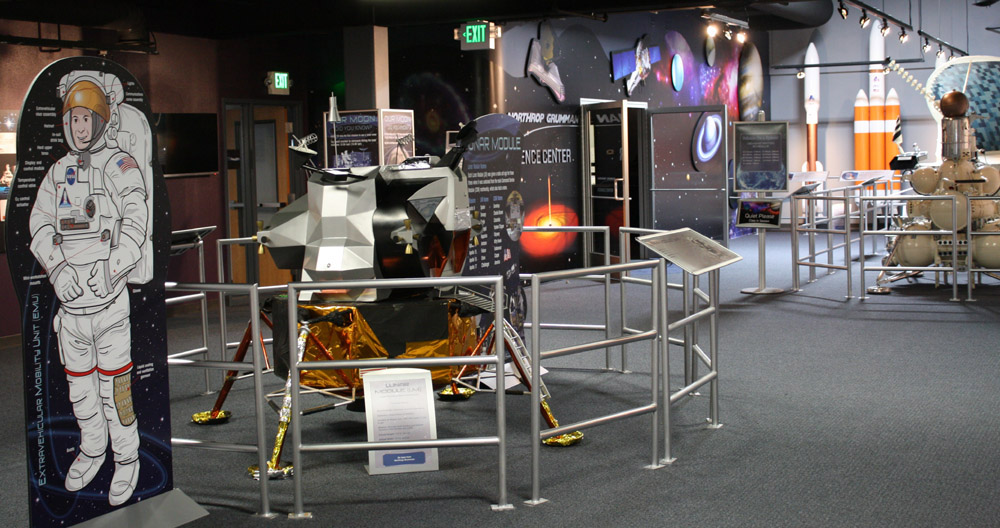 We opened our new Visitors Center during World Space Week with a series of events, including a Grand Opening featuring presentations by the Space Foundation and senior Northrop Grumman representatives, a family day for Colorado Northrop Grumman employees and their families, a public opening with an autograph session with former NASA Astronaut and Space Foundation Special Advisor - Human Spaceflight Dr. Leroy Chiao and an educator event with tours and demonstrations for Colorado school superintendents, curriculum administrators, principals and members of the Space Foundation Teacher Liaison program.
We opened our new Visitors Center during World Space Week with a series of events, including a Grand Opening featuring presentations by the Space Foundation and senior Northrop Grumman representatives, a family day for Colorado Northrop Grumman employees and their families, a public opening with an autograph session with former NASA Astronaut and Space Foundation Special Advisor - Human Spaceflight Dr. Leroy Chiao and an educator event with tours and demonstrations for Colorado school superintendents, curriculum administrators, principals and members of the Space Foundation Teacher Liaison program.
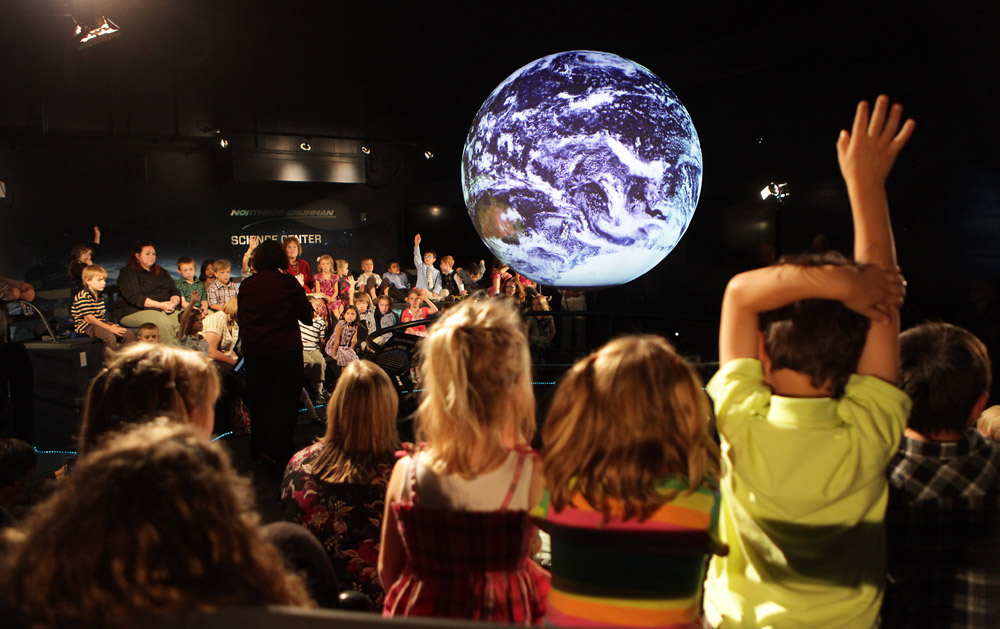 Within the next few years, we will significantly expand the El Pomar Space Gallery to include new exhibits and showcase more space artifacts. We plan to build a teaching auditorium for both onsite and distance-learning enhancements to our already-extensive education programs. And, we plan to open a Space Technology Hall of Fame® that will allow visitors to experience the profound impact that space technology has had on our everyday lives, as well as honoring the individuals who discovered and developed these amazing innovations. To help us expand our Visitors Center - including options for named sponsorship of the Space Technology Hall of Fame or the teaching auditorium - contact us at donations@spacefoundation.org, +1.719.576.8000 or +1.800.691.4000.
Within the next few years, we will significantly expand the El Pomar Space Gallery to include new exhibits and showcase more space artifacts. We plan to build a teaching auditorium for both onsite and distance-learning enhancements to our already-extensive education programs. And, we plan to open a Space Technology Hall of Fame® that will allow visitors to experience the profound impact that space technology has had on our everyday lives, as well as honoring the individuals who discovered and developed these amazing innovations. To help us expand our Visitors Center - including options for named sponsorship of the Space Technology Hall of Fame or the teaching auditorium - contact us at donations@spacefoundation.org, +1.719.576.8000 or +1.800.691.4000.
Learn more here.
PIONEERING: Sustaining U.S. Leadership in Space
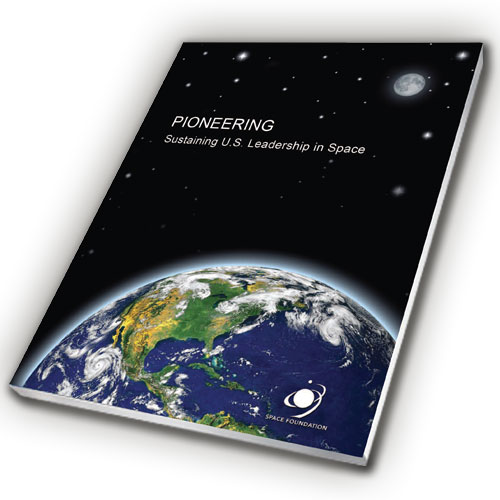 The result of more than a year of in-depth research and analysis, the Space Foundation's report, PIONEERING: Sustaining U.S. Leadership in Space, makes recommendations for revitalizing NASA and creating a stronger U.S. civil space program.
The result of more than a year of in-depth research and analysis, the Space Foundation's report, PIONEERING: Sustaining U.S. Leadership in Space, makes recommendations for revitalizing NASA and creating a stronger U.S. civil space program.
Released at a high-level event in Washington, D.C., in December, the report was distributed to policymakers, corporate members and the media. It has sparked dialogue that we hope will, ultimately, reinvigorate U.S. commitment and accomplishment in the space arena.
Among the bold changes recommended by the Space Foundation are:
- Establishing pioneering as NASA's singular, compelling purpose and transitioning other activities to other government and private sector organizations.
- Realigning the national civil space enterprise so NASA is no longer perceived as being responsible for "all things space" and instead concentrates on expanding the national civil space enterprise.
- Stabilizing NASA leadership and increasing the agency's autonomy by appointing the NASA Administrator for fixed, five-year terms.
- Stabilizing NASA planning with an objectives-based 10-year plan and a broad 30-year strategic plan, to be reviewed by Congress every five years.
- Expanding options available to Congress for funding NASA.
The 70-page report is based on historical research and interviews with nearly 100 space leaders.
Learn more here.
Education Programs Expand
 With the opening of the Northrop Grumman Science Center, we added an entire new Science On a Sphere-based component to our already-rich slate of education programs. Plus, we continued to expand existing programs to reach more and more students and teachers around the globe.
With the opening of the Northrop Grumman Science Center, we added an entire new Science On a Sphere-based component to our already-rich slate of education programs. Plus, we continued to expand existing programs to reach more and more students and teachers around the globe.
To find out more, read Annual Report: We Round Out our Education Programs in this issue of Space Watch. Learn more about education programs here.
Our Reach Extends
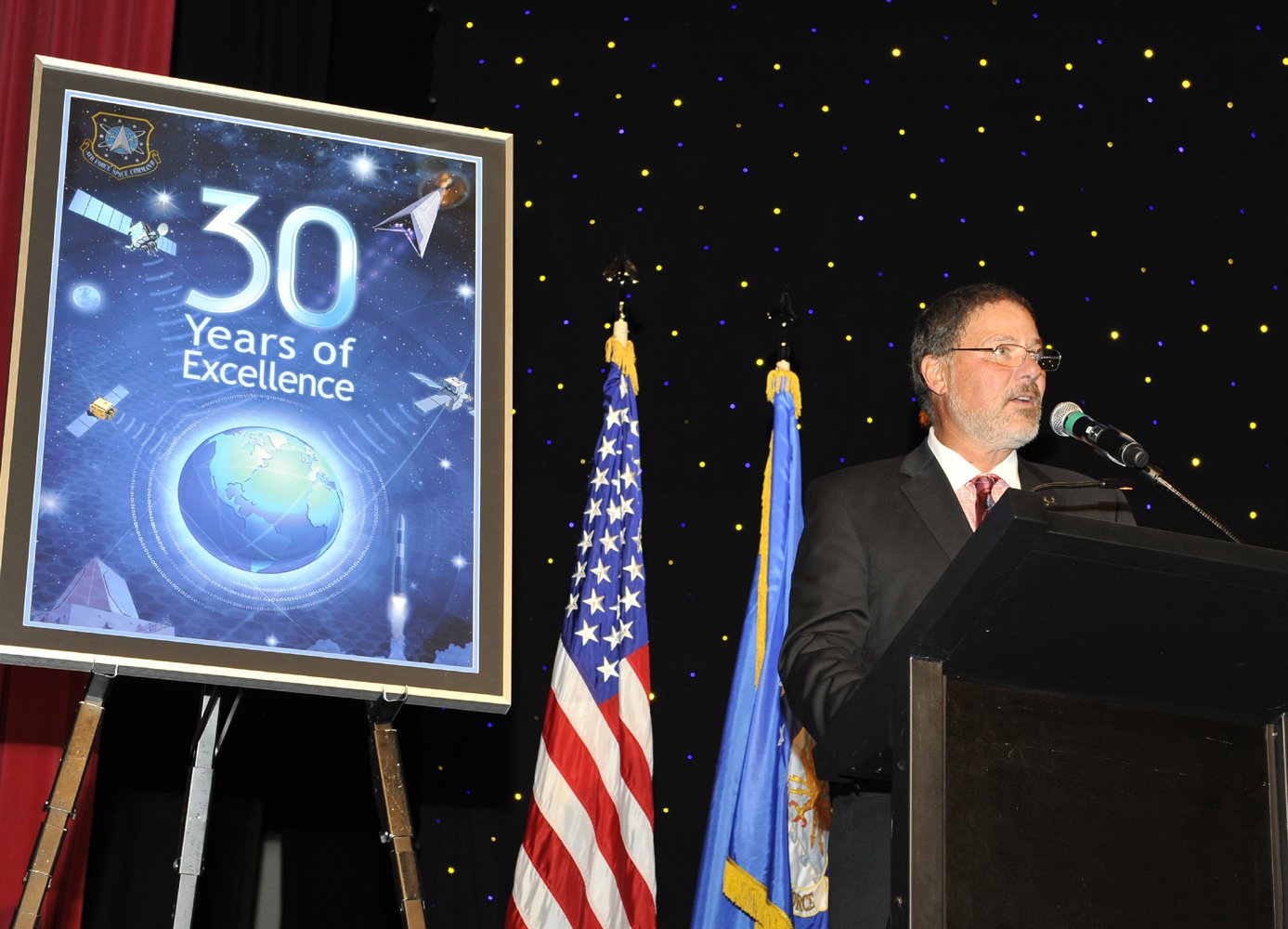 As the space industry became more global, so did the Space Foundation. With the opening of our new headquarters and our Visitors Center, we made a bigger splash in our local communities. Plus, we continued to grow our two major space awareness programs, Space Certification and the Space Technology Hall of Fame.
As the space industry became more global, so did the Space Foundation. With the opening of our new headquarters and our Visitors Center, we made a bigger splash in our local communities. Plus, we continued to grow our two major space awareness programs, Space Certification and the Space Technology Hall of Fame.
Pictured, left, CEO Elliot Pulham speaks at our salute to Air Force Space Command's 30th anniversary.
To find out more, read Annual Report: Our Reach Extends in this issue of Space Watch. Learn more about international activities here. Space Certification here and the Space Technology Hall of Fame here.
This article is part of Space Watch: April 2013 (Volume: 12, Issue: 4).

